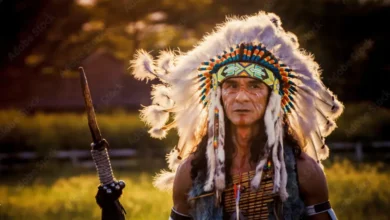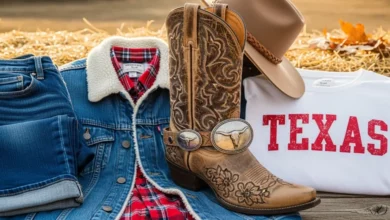Explore the stunning diversity of Native American traditional clothing — from feathered regalia to beaded moccasins. Discover how each tribe’s dress tells a story of land, spirit, and survival.
Close your eyes.
Imagine soft deerskin leggings stitched with porcupine quills.
A dancer’s shawl fluttering like wings in sacred ceremony.
Beads clicking softly as a grandmother walks, each color holding a prayer.
This is Native American traditional clothing — not costume. Not relic. But living heritage.
See also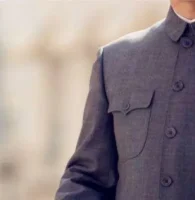 The Enduring Legacy of the Zhongshan Suit: A Symbol of Chinese Pride and Modern Style
The Enduring Legacy of the Zhongshan Suit: A Symbol of Chinese Pride and Modern StyleWoven from buffalo hide, cedar bark, sweetgrass, and starlight — these garments carry songs, stories, and survival.
In this article, you’ll discover:
- Why no single “Native American outfit” exists (there are 574+ tribes!)
- How materials like beads, feathers, and hides hold spiritual power
- The deep meanings behind patterns, colors, and regalia
- How tradition thrives today — on powwow grounds, runways, and reservations
- How to honor — not appropriate — these sacred styles
Whether you’re a student, traveler, or culture lover — prepare to see Native fashion as the art, identity, and resilience it truly is.
Let’s begin — with respect.
See also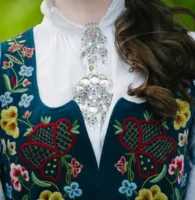 The Timeless Threads of the Bunad: Norway’s Living Heritage in Every Stitch
The Timeless Threads of the Bunad: Norway’s Living Heritage in Every StitchWhat Is Native American Traditional Clothing?
Native American traditional clothing refers to the handmade garments, accessories, and ceremonial regalia created and worn by the Indigenous peoples of North America.
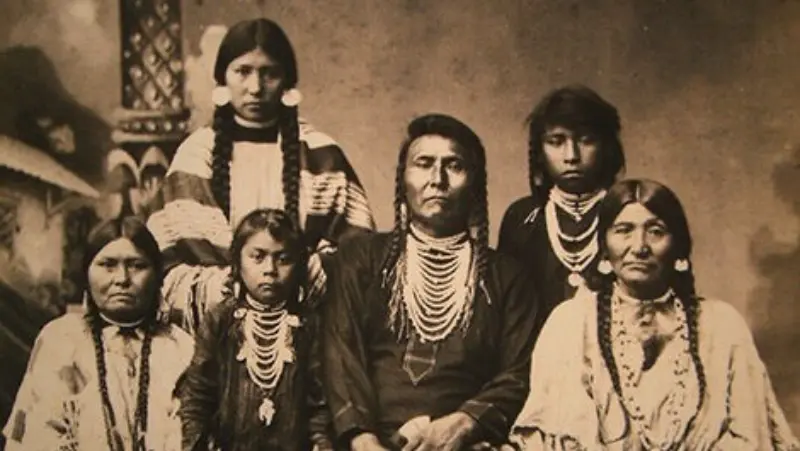
Key things to know:
✅ It’s not one style — it’s hundreds.
✅ It’s deeply tied to land, climate, and spirit.
✅ It’s still worn today — alive, evolving, powerful.
✅ It’s often sacred — not meant for casual wear or costumes.
Every piece tells a story — of the maker, the wearer, the tribe, the ancestors.
A Quick History: From Survival to Celebration
Native clothing didn’t start as “art.” It started as necessity — shaped by land, season, and spirit.
Pre-Contact: Clothing Born of the Land
Before European arrival, tribes used what the earth provided:
- Plains tribes (Lakota, Cheyenne): Buffalo hide robes, sinew thread, quillwork
- Southwest tribes (Navajo, Hopi): Woven cotton, yucca fiber, turquoise
- Northeast/Woodlands (Iroquois, Wampanoag): Moosehide, birchbark, wampum beads
- Northwest Coast (Tlingit, Haida): Cedar bark capes, woven spruce root hats
- Arctic (Inuit, Yup’ik): Seal and caribou skin parkas, fur-lined hoods
Clothing was practical — but never plain. Even everyday wear carried beauty, meaning, and skill.
Colonial Impact: Loss, Adaptation, Resistance
With colonization came forced assimilation.
Missionaries banned traditional dress.
Governments outlawed ceremonies.
Children in boarding schools had their clothes burned.
But Native people adapted — and resisted.
They hid sacred items.
They replaced quills with glass beads (traded from Europe).
They kept sewing, singing, dancing — in secret, then in strength.
Today: Rebirth and Renaissance
From the Red Power Movement of the 1960s to modern powwows and fashion weeks — Native clothing is reclaiming its space.
Designers like Bethany Yellowtail (Crow/Northern Cheyenne) and Jamie Okuma (Luiseño/Shoshone-Bannock) blend tradition with haute couture.
Museums return stolen regalia.
Schools teach beading to youth.
Social media shares #NativeFashion.
The message? We’re still here. And we dress like it.
Materials & Methods: Earth, Hands, Spirit
Nothing is wasted. Everything is honored.
Hides & Furs: The Gift of the Animal
- Buffalo (Plains): Robes, leggings, moccasins — warm, durable, sacred
- Deer/Elk (Woodlands): Soft tunics, dresses, baby carriers
- Seal/Caribou (Arctic): Waterproof parkas, boots with fur trim
- Rabbit/Mountain Goat (Plateau, NW Coast): Blankets, woven robes
Hides were brain-tanned — soaked in animal brains to soften them. A sacred process.
Beads: Tiny Prayers, Bright Stories
Before glass beads? Porcupine quills. Dyed with berries, roots, minerals.
After European trade? Glass beads arrived — and Native artists made them their own.
Types:
- Lazy stitch (Plains) — broad, bold designs
- Appliqué (Great Lakes) — layered fabric + beads
- Loom beading (Southwest, Woodlands) — intricate geometric patterns
Colors mean things:
- 🔴 Red = blood, war, life
- 🔵 Blue = sky, water, wisdom
- ⚪ White = peace, spirit, snow
- ⚫ Black = night, death, west
- 🟡 Yellow = sun, harvest, east
Feathers: Not Just Decoration — Sacred Honor
Eagle feathers? Most sacred.
Earned — not bought. Given — not taken.
Each feather represents an act of courage, service, or prayer.
Worn in headdresses, bustles, fans — always with reverence.
Other birds: hawk, owl, turkey — also honored, depending on tribe.
Weaving, Quillwork, and Beyond
- Navajo weaving — wool blankets with symbolic patterns
- Chilkat robes (NW Coast) — mountain goat wool + cedar bark, worn by chiefs
- Quillwork (Plains, Woodlands) — dyed porcupine quills sewn in floral or geometric designs
- Wampum belts (Northeast) — purple/white shell beads recording treaties and stories
Every stitch? A prayer. Every pattern? A memory.
Regional Styles: One Land, Hundreds of Looks
Let’s tour the map — tribe by tribe, style by style.
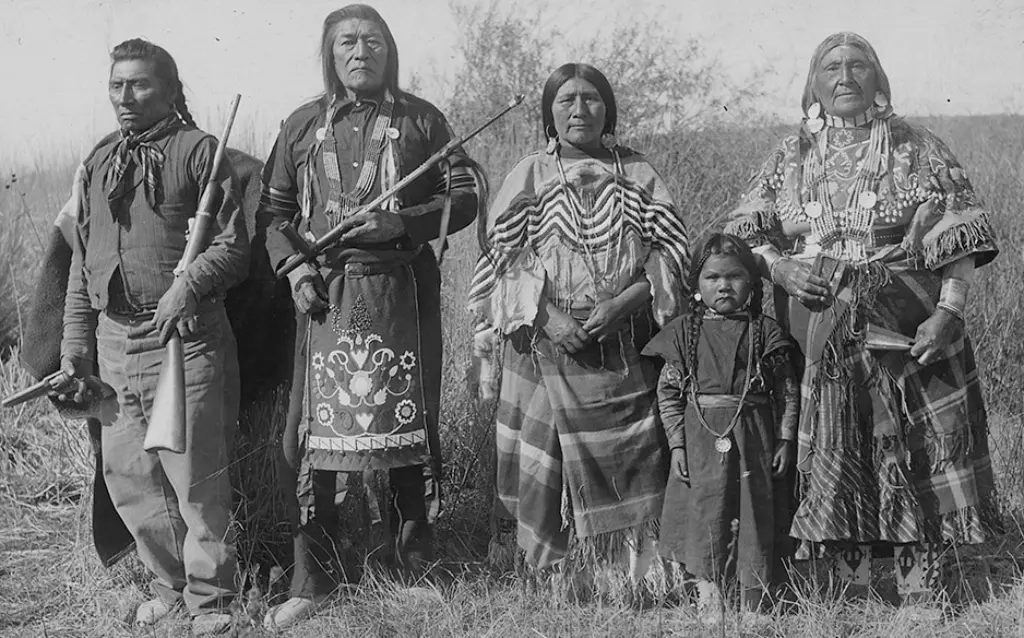
Plains Tribes (Lakota, Cheyenne, Crow)
Iconic look: Fringed buckskin, feathered war bonnets, beaded moccasins.
- Men: Leggings, breechcloths, breastplates, feathered roaches or bonnets
- Women: Long deerskin dresses, elk-tooth adornments, beaded yoke collars
- Ceremonial: Eagle feather bustles, ribbon shirts, bone breastplates
Vibe: Bold. Regal. Warrior grace.
Southwest Tribes (Navajo, Hopi, Pueblo)
Iconic look: Woven blankets, silver/turquoise jewelry, squash blossom necklaces.
- Men: Velvet shirts, concho belts, moccasins
- Women: Manta dresses (black sash at waist), woven sashes, hair whorls (Hopi)
- Ceremonial: Kachina masks (Hopi/Zuni), prayer feathers, woven kilts
Vibe: Earthy. Spiritual. Timeless.
Northeast/Woodlands (Iroquois, Wampanoag, Ojibwe)
Iconic look: Gustoweh headdress (Iroquois), floral beadwork, wampum belts.
- Men: Breechcloths, leggings, gustoweh (feathered hat with tribal signifier)
- Women: Wrap skirts, overdresses, beaded moccasins, woven sashes
- Ceremonial: False face masks (Iroquois), turtle rattles, corn husk dolls
Vibe: Woodland elegance. Storytelling in stitch.
Northwest Coast (Tlingit, Haida, Kwakwaka’wakw)
Iconic look: Cedar bark capes, carved masks, Chilkat robes.
- Men/Women: Button blankets (red/black with crest designs), cedar hats, abalone shell jewelry
- Ceremonial: Transformation masks, raven rattles, woven spruce root hats
Vibe: Dramatic. Mythic. Totemic power.
Arctic/Subarctic (Inuit, Yup’ik, Gwich’in)
Iconic look: Fur-lined parkas, waterproof sealskin boots, beaded amauti (baby-carrying coat).
- Men/Women: Caribou or seal skin parkas with decorative cuffs and hoods
- Ceremonial: Dance fans, beaded headdresses, fur-trimmed mittens
Vibe: Functional beauty. Survival art.
| Region | Signature Item | Key Material | Spiritual Element |
|---|---|---|---|
| Plains | War Bonnet | Eagle feathers | Honor, courage |
| Southwest | Squash Blossom Necklace | Turquoise + silver | Protection, sky |
| Northeast | Gustoweh Headdress | Turkey feathers + wood | Tribal identity |
| NW Coast | Button Blanket | Wool + mother-of-pearl | Clan crest, status |
| Arctic | Amauti Parka | Seal/caribou skin | Motherhood, warmth |
Ceremonial Regalia: Sacred, Not Costume
This is where many outsiders get it wrong.
Regalia ≠ costume.
Regalia = sacred clothing worn for ceremony, dance, prayer.
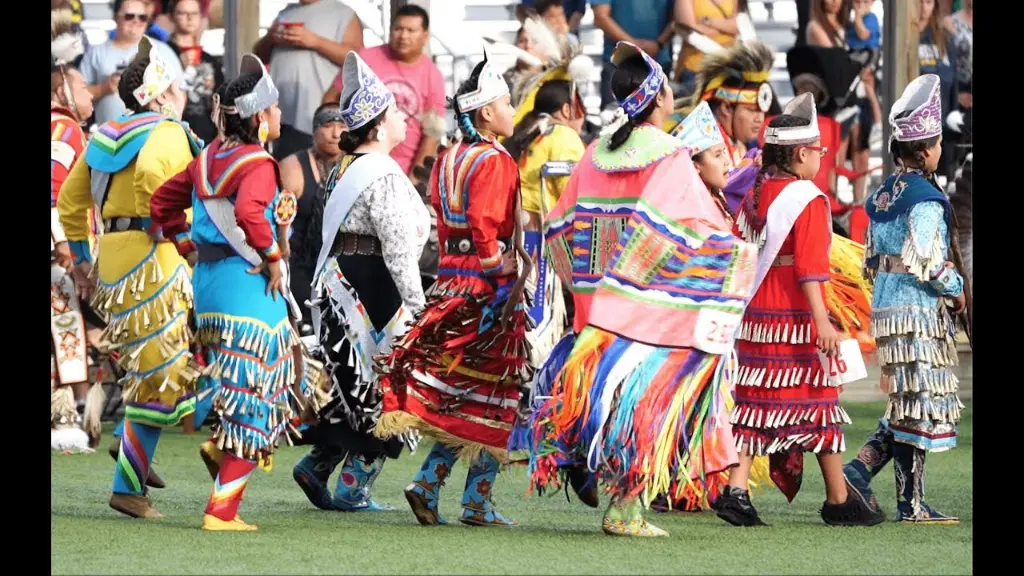
Powwow Regalia
Modern powwows are social AND spiritual gatherings. Dancers wear regalia specific to their style:
- Fancy Shawl (Women) — Colorful, fringed shawls mimicking butterfly wings
- Jingle Dress (Women) — Dresses with 100+ metal cones, healing origins (Ojibwe)
- Grass Dance (Men) — Fringed outfits mimicking tall prairie grass
- Traditional Dance (Men/Women) — Historic styles, often with feather bustles or elk teeth
Each piece is handmade — often taking years. Not bought. Not rented.
Spiritual Significance
- Feathers must be earned or gifted.
- Beadwork may include protective symbols.
- Colors align with directions, elements, prayers.
- Some items can only be worn by certain people (e.g., clan leaders, healers).
⚠️ Never touch someone’s regalia without permission.
⚠️ Never wear imitation headdresses or “Indian costumes.”
✅ Always ask. Always honor.
Craftsmanship: Hands That Keep Culture Aliv
Behind every piece? Generations of skill.
Master Beaders
Artists like Jamie Okuma (Luiseño/Shoshone-Bannock) bead high heels with ancestral precision.
Orlando Dugi (Diné) stitches gowns fit for the Met Gala — using lazy stitch and quillwork.
Their work? In museums. On runways. In hearts.
Hide Tanners
Still using brain-tanning methods — soaking, stretching, smoking hides over cedar fires.
A months-long process. A sacred act.
Weavers
Navajo grandmothers teaching girls to weave on upright looms.
Tlingit artists reviving Chilkat weaving — one robe can take a year.
Feather Workers
Cleaning, straightening, tying eagle feathers — always with prayer.
Many belong to societies that care for feathers and pass them on.
Native Fashion Today: Tradition on the Runway
Native designers aren’t stuck in the past. They’re shaping the future.
Designers Leading the Way
- Bethany Yellowtail (Crow/Northern Cheyenne) — B.Yellowtail brand, worn by Beyoncé, Deb Haaland
- Jamie Okuma — Beaded Louboutins, Smithsonian collections
- Orlando Dugi — Haute couture meets Diné tradition
- Lesley Hampton (Anishinaabe) — Body-positive, size-inclusive Native fashion
- Dustin Martin (Navajo) — Streetwear with ancestral motifs
Runways & Red Carpets
- Indigenous Fashion Week Toronto
- Santa Fe Indian Market fashion shows
- Oscars, Grammys, Met Gala — Native designers dressing stars
Reclaiming Narratives
Brands like Beyond Buckskin (Dr. Jessica Metcalfe, Turtle Mountain Chippewa) promote ethical Native fashion.
“No more headdresses at Coachella,” they say.
“Yes to Native models, Native designers, Native stories.”
Cultural Appropriation vs. Appreciation
This matters. Let’s get it right.
🚫 Appropriation = Taking sacred symbols/styles without permission, context, or credit.
Examples:
- Wearing war bonnets to music festivals
- Selling “Navajo print” underwear (Urban Outfitters got sued — and lost)
- Using tribal patterns as “boho decor”
✅ Appreciation = Honoring, learning, supporting.
Examples:
- Buying directly from Native artists
- Learning the meaning behind a design
- Wearing non-sacred items (like beaded earrings) made by Native hands
- Amplifying Native voices
Golden rule: If it’s sacred or ceremonial — don’t wear it unless you’re invited to.
How to Engage Respectfully (Visitor, Fan, Student)
Want to love Native fashion the right way? Here’s how.
If You’re Attending a Powwow
✅ Do:
- Ask before taking photos
- Stand during honoring songs
- Buy from Native vendors
- Wear modest, respectful clothing (no shorts or tank tops)
🚫 Don’t:
- Touch regalia
- Wear anything resembling regalia (headdresses, bustles)
- Bring alcohol or drugs
If You Want to Buy Native-Made Items
✅ Do:
- Look for “Native-made” or artist signatures
- Buy from tribal co-ops, galleries, or sites like BeyondBuckskin.com
- Learn the artist’s tribe and story
🚫 Avoid:
- Mass-produced “Indian-style” goods from big box stores
- Items labeled “Native-inspired” (often not Native-made)
- Sacred items like war bonnets or medicine bags
If You’re Teaching or Sharing
✅ Do:
- Use correct tribal names (not “Plains Indians”)
- Credit artists and nations
- Share contemporary Native voices — not just historical
🚫 Don’t:
- Use outdated terms (“squaw,” “papoose”)
- Present Natives as “vanished” or “stuck in the past”
- Generalize 574+ tribes as one culture
Conclusion
Native American traditional clothing is not frozen in time.
It breathes. It dances. It prays.
Woven from buffalo hide, cedar bark, glass beads, and eagle feathers — it carries the songs of ancestors and the dreams of descendants.
Each stitch? A story.
Each bead? A blessing.
Each feather? A hard-earned honor.
This isn’t costume. It’s culture.
Not relic. It’s resilience.
Not trend. It’s truth.
So next time you see a jingle dress shimmer or a button blanket gleam — pause.
Look closer.
You’re not just seeing fabric.
You’re witnessing survival.
You’re honoring artistry.
You’re standing in the presence of living history.
And that? Is sacred.
Ready to Honor — Not Just Admire?
👉 Support Native Artists — Buy direct. Pay fairly. Say their names.
👉 Attend a Powwow — Watch. Listen. Learn. With respect.
👉 Educate Yourself — Read books by Native authors. Watch documentaries by Native filmmakers.
👉 Speak Up — Call out appropriation. Amplify appreciation.
Because in a world that tried to erase them, Native people still dress — beautifully, powerfully, proudly — in who they are.
Welcome to the circle.
Welcome to the dance.
Welcome to the living tapestry of Native American heritage.
—
References (APA Style)
Bernstein, B. (2017). The Oxford Handbook of American Indian Art. Oxford University Press.
Her Many Horses, E. (2013). Identity by Design: Tradition, Change, and Celebration in Native Women’s Dresses. National Museum of the American Indian.
Metcalfe, J. (2012). Beyond Buckskin: Taking a Stand Against Cultural Appropriation. http://www.beyondbuckskin.com
National Museum of the American Indian. (n.d.). Ceremony and Community: Native American Regalia. https://americanindian.si.edu
Penney, D. W. (2004). North American Indian Art. Thames & Hudson.
Powers, W. K. (1980). Sacred Language: The Nature of Supernatural Discourse in Lakota. University of Oklahoma Press.
Yellowtail, B. (2020). B.Yellowtail: Reclaiming Native Narrative Through Fashion. TEDx Talk.

